Upon the recommendation of a friend, I watched ‘Died Suddenly’ and was extremely alarmed by the segments concerning the embalmers and the apparently novel whitish stringy material they were finding in the veins and arteries of a high proportion of the deceased. I have been investigating the matter since, and remain extremely alarmed. I have appraised the so-called ‘factcheck’ or ‘debunking’ articles which claim that what the embalmers are seeing is completely normal. One thing that makes them singularly unconvincing is that they contain alternative mutually exclusive explanations. A striking example is provided by the only article I have seen which includes the opinion of one or more specialists. Irene Sansano, an anatomical pathologist, suggests that the ‘clots’ found by embalmer Richard Hirschman are normal ante-mortem clots:
but Nikolaus Klupp, an Associate Professor (Forensic Medicine), disagreed, stating that they looked ‘more like’ post-mortem clots on account of their colour, their shape and in particular their size. In addition he pointed out that ante-mortem clots tend to be strongly attached to the walls of the blood vessel and are therefore difficult to detach:
Neither of these experts examined a sample of the material extracted by the embalmers. Why not?
It seems to me that a proper evaluation of the claims being made by embalmers should begin with a full account of what they are reporting. I begin with embalmer Richard Hirschman’s interview with Jane Ruby, which first broke the story:
Hirschman-Ruby, 26 January 2022
Hirschman told Ruby [1:58] that he had been embalming since 2001 and had been Board Certified since 2004:
and is currently a ‘trade embalmer’, working in several locations.
I have been finding these strange clots. It all started, I can't put my finger on it, but probably around the middle of last year. [2:18]
That is, the middle of 2021. Ruby then shows [2:51] a photograph of a long ‘clot’ lying next to a body on a mortuary table, and extending almost the length of the leg (which can be seen in the video). The underlying material appears to be whitish:
Mr Hirschman has kindly provided his original photograph, allowing a better look at it:
Ruby asked how he came upon it.
When I do the embalming I have to go into the vein... and in order for the embalming process I had to allow the blood to be drained.. I actually pulled this huge long clot – fibrous looking clot – out prior to embalming.
R: What part of the body did this come from?
H: This one came from the iliac..
R: From the groin?
H: Yes.
I suspect Hirschman is using ‘iliac’ as shorthand for the external iliac vein, which is a continuation of the femoral vein.
It was almost the length of the leg. I had pulled out a few others before this... I said I gotta take a picture because you know nobody would believe what this looked like. At one end it looks like a normal blood clot, but that white fibrous looking stuff just isn't normal.
Typically [4:21] a blood clot is smooth, it's blood that has coagulated together, but when you squeeze it or try to pick it up it generally falls apart.. you can almost squeeze it between your fingers and almost get it back to blood again.. but this white fibrous stuff is pretty strong it's not weak at all, you can manipulate it, it's very pliable it's not hard.. it is not normal.. I don't know how somebody could live with something like this inside them.
There follows [7:27] an image of a few smaller ‘clots’ of this type on someone’s gloved hand after they had been washed:
Hirschman comments:
To get a view of what is inside of this, I could literally rinse these clots, rub the blood off of them, and this white stuff holds strong. It does not dissolve. You can break it, but it's stretchy..
I contacted colleagues of mine and they are all seeing the same thing – this is not normal for anybody I know.
Ruby shows [8:40, 8:51, 9:02] a third image of ‘clot’ material, including another very long one that extends most of the length of the leg:
and asks Hirschman to confirm that he had said that he was pulling these ‘clots’ mostly from veins rather than arteries.
Yes, but on this one here, I also got one out of the artery as well, which is unusual. I have here lately been pulling some out of arteries. I actually pulled one out of an artery last night. All these years of experience normally you don't get clots out of an artery unless somebody has been dead for several days but this was definitely not [inaudible - 'that type of'?] case.
Ruby asks [9:27] whether there was any difference between the material pulled out of arteries and that from veins.
The ones I pull from veins are much larger usually – the ones that I am pulling out of the artery are the same type of thing – they usually have that long stringy whitish substance to it [10:00], usually a little bit of blood is attached to it; sometimes it seems like they are intermingled – it almost seems like the white grows almost out of the blood, weird as that sounds – I call them worms because to me they look very similar to worms.. like small worms.
I had someone in the embalming room with me one night and there were a whole bunch of them coming out and his words were 'it looks like heart worms for people'.
Ruby asks [13:55] whether Hirschman or his colleagues have obtained a chemical analysis of the material.
No, not that I know of. I am working on finding someone that will do that.
She asks [14:15] whether he and his colleagues have secured specimens for later analysis.
Yes, I do have one specimen. I don’t need to worry about having some because if I embalm four bodies in one day, it’s likely that there will be two of them that have it.
Right now, since November, I have been starting to keep track, it seems like the trend is on the rise. Right now, over 50% of the bodies I am embalming have something like this coming out of them.
An update on numbers
I spoke to Richard Hirschman on 19 December. He said that he had embalmed 129 bodies since 1 September and of these 59 had this white stringy material. That’s about 46%. This is huge.
Further images
Hirschman also kindly sent me the following better quality photographs of the material. The first seems (from the file name) to be from October 2021:
The second is from May 2022, and was featured in another interview with Jane Ruby (11 May). She shows video of it being extracted. [Warning: there is a sudden expulsion of fluid at the moment that the ‘clot’ is finally removed.] Hirschman described [10:59] the circumstances:
I normally like to embalm from the iliac region, and so I am pushing but I am having an issue with drainage and I am having an issue with distribution of fluid going through, so I opened the jugular vein - that big long angular forceps is what is in the vein - and then.. I am still having an issue.. so I open the carotid artery and I am trying.. to allow some fluid to come out of there to see if I am getting fluid .. it should be going through there. When I first cut it open, I pulled out another clot out of the carotid artery which is not on the video but then I continued having problems and so I am having to try and open that.. [artery] up because the artery is stretchable, it is like a rubber band and his arteries were in good shape, they weren’t sclerotic.. they were pretty good for his age [11:56]
[12:48] I am looking to see as I am pushing fluid in, is it coming out there, because if it is not coming out there, then it is not going in to the head - so as I opened that up, I am not getting enough fluid, I’m like there’s something’s wrong, something is blocking this [13:03] - and that’s why I am trying to open it up to allow whatever is blocking it to come out.
The third is of a ‘clot’ 33 inches long, extracted in September 2022:
John O’Looney, Funeral Director
John O’Looney, Director of Milton Keynes Family Funeral Services, has kindly provided images of material removed from a young man in June 2022 after his autopsy. He described the circumstances in a Zoom meeting with Sam Dubé et al on 3 July 2022:
[0:07] On Friday I looked after a guy who died suddenly, and he had a post-mortem.. They basically take all the organs out and do whatever they need to do with the organs.. and then they put them back in a bag, and the bag is put back in the cavity.. and then they sew the cavity up. Now obviously the arterial system in that person has been compromised so you can’t do a traditional embalming, it’s quite invasive, so you have to open the cavity, take the organs out and source the individual arteries that have been severed so the femoral arteries down both legs, the radial ones down the arms, and the carotid both sides and straight away the embalmer saw all this crap hanging out of this person’s arteries.. This is a glass of formaldehyde with just some of [what] was pulled out of the arteries to get the pump in, because it was blocking..
[1:39] so you see the thick one here, this one.. came out of the aorta from the heart. They take the shape of the vessels that they are growing in.. This was from the femoral artery, the two radial arteries, a carotid artery.. The femoral artery I would estimate was about two feet long and came out in one piece. They’re very fibrous, very tough, and elastic, and reasonably resemble.. if you were to imagine they were made in latex, or.. they resemble tendons or ligaments to look at.
[3:17] Inevitably they are covered in blood clots when you pull them out, because blood is pulled on them, it is clotted on them.. When you clean them up, that is kind of how they look. I suggest they have gone black because they have been put in formaldehyde, but they are bright white to look at. Not normal, not normal by any means.
The material after extraction:
in preservation:
and in a bowl to allow a clearer view:
Wallace Hooker, Funeral Director and Deputy Coroner
Wallace Hooker is Funeral Director of Family and Friends Funeral Home in Indiana, and Fountain County’s Chief Deputy Coroner. He became a Medico-Legal Death Investigator through the Indiana Coroner Training Board in 1998. He is a 1994 graduate of Worsham College of Mortuary Science and currently serves on its advisory board. He is 2015-2016 Past President of the Indiana Funeral Director’s Association, and serves on the board of the North American Division of the British Institute of Embalmers. He lectures around North America, being for example the guest speaker at the 2020 Annual Meeting of the Colorado Funeral Director’s Association:
In an interview published on 12 September 2020, he told Sherry Strong of Children’s Health Defense Canada that for the previous 16 to 18 months (ie since March to May 2021) he had been seeing something different to what he had seen previously in his career [1:56-2:08]. His funeral home does trade embalming for other funeral homes, amounting to a total of about 250 embalmings per year [3:00].
[3:20] We've being seeing clots for 30 years and beyond 30 years.. those were the softer.. in mortuary college we called them currant jelly clots because it almost looked like grape jelly. And in the past year and a half they seem to have significantly grown, somewhat, but we are also seeing these white fibrous structures – I hesitate to call them clots because any time this group of us that have talked about this openly, we have been at the wrath of people saying I've been seeing clots, my dad saw clots, we’ve been seeing clots from the beginning – we have – but we haven't been seeing the white fibrous clots.
[5:42] They are really tough and fibrous unlike things we had seen before.
[21:11] How can we, as decent human beings, turn a blind eye to what we are seeing in the embalming rooms? .. I’ve lectured four times this year out of state, Oklahoma, Iowa, Mississippi.. I’m showing pictures of these clots, and I said you don’t have to answer here.. when you are seeing this things, would you send me photos, and I’m getting photos almost daily from all over the country. People are finally not afraid to stand up and say ‘I’m seeing these, I thought I was being crazy.’
Anna Foster, embalmer
Anna Foster is an embalmer at Foster Family Funeral Chapel and Cremation Services, licensed in the State of Missouri:
She told Steve Kirsch on 12 February 2022 that she had started seeing these ‘very large fibrous clots’ [2:37] around 8 months before, that is around June 2021. She had seen this type of material in 28 of the last 30 cases.
[10:23] K: In your history you've never seen anything like this before?
F: No, never.. I'm only 11 years in it [embalming] but I have seen quite a bit in my eleven years.. and any of the embalmers I have spoken to never have seen these either, I mean they are just bizarre.
Recent photos
Richard Hirschman has kindly shared two further photographs of material extracted from two different bodies on the same day about three weeks ago:
CONCLUSIONS
These four embalmers and undertakers tell the same story.
The material is whitish in colour.
It is strong.
They describe it as fibrous.
They have not seen it before 2021.
From Hirschman and O’Looney we learn that it occurs in arteries as well as veins. It is possible to pull out long lengths of the material. This demonstrates its strength, but also suggests that it is not very firmly attached to the vascular walls.
It must be investigated with the utmost urgency. What is it, and what is causing it?
Andrew Chapman


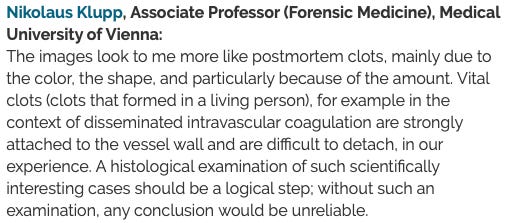



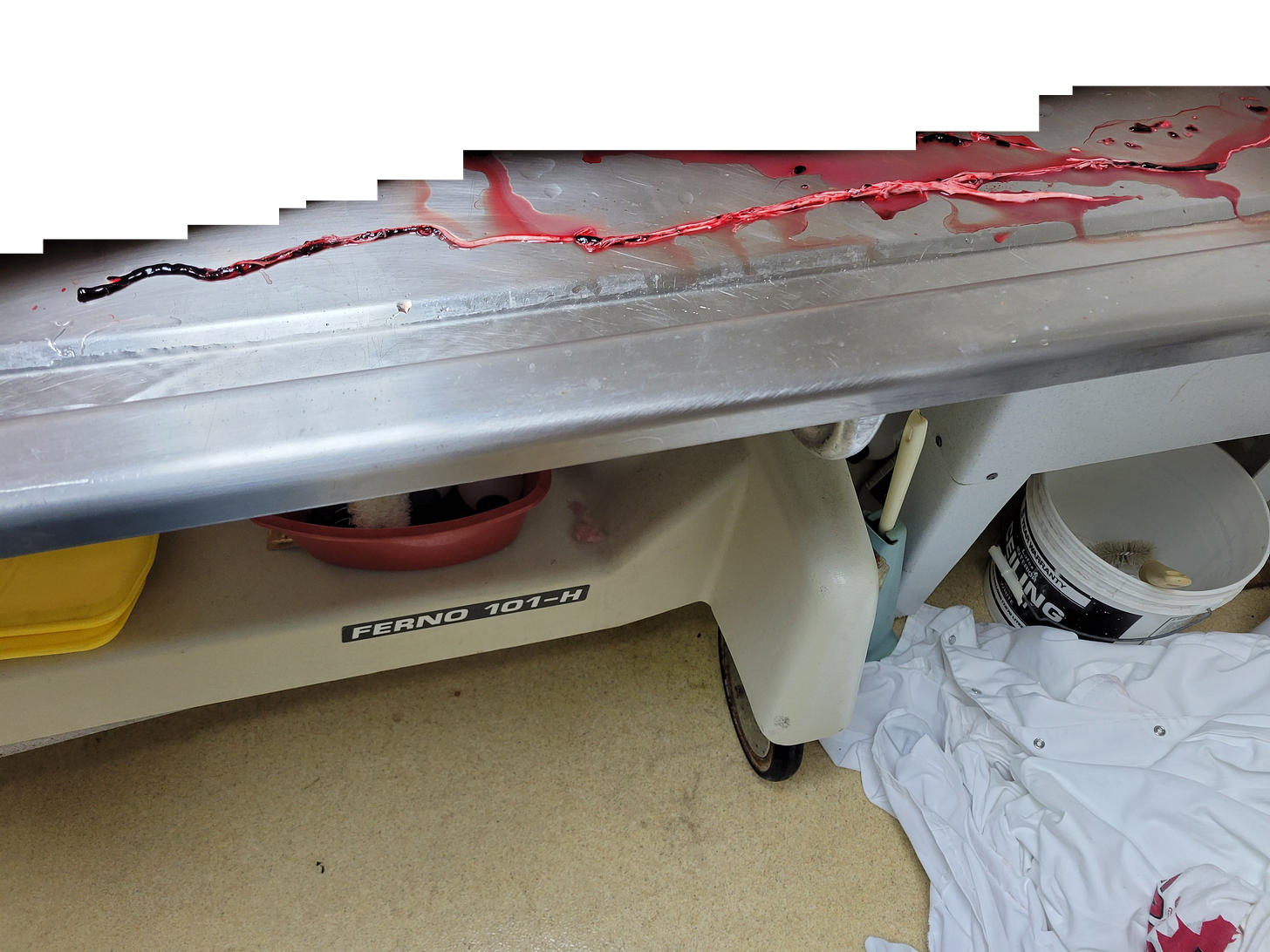





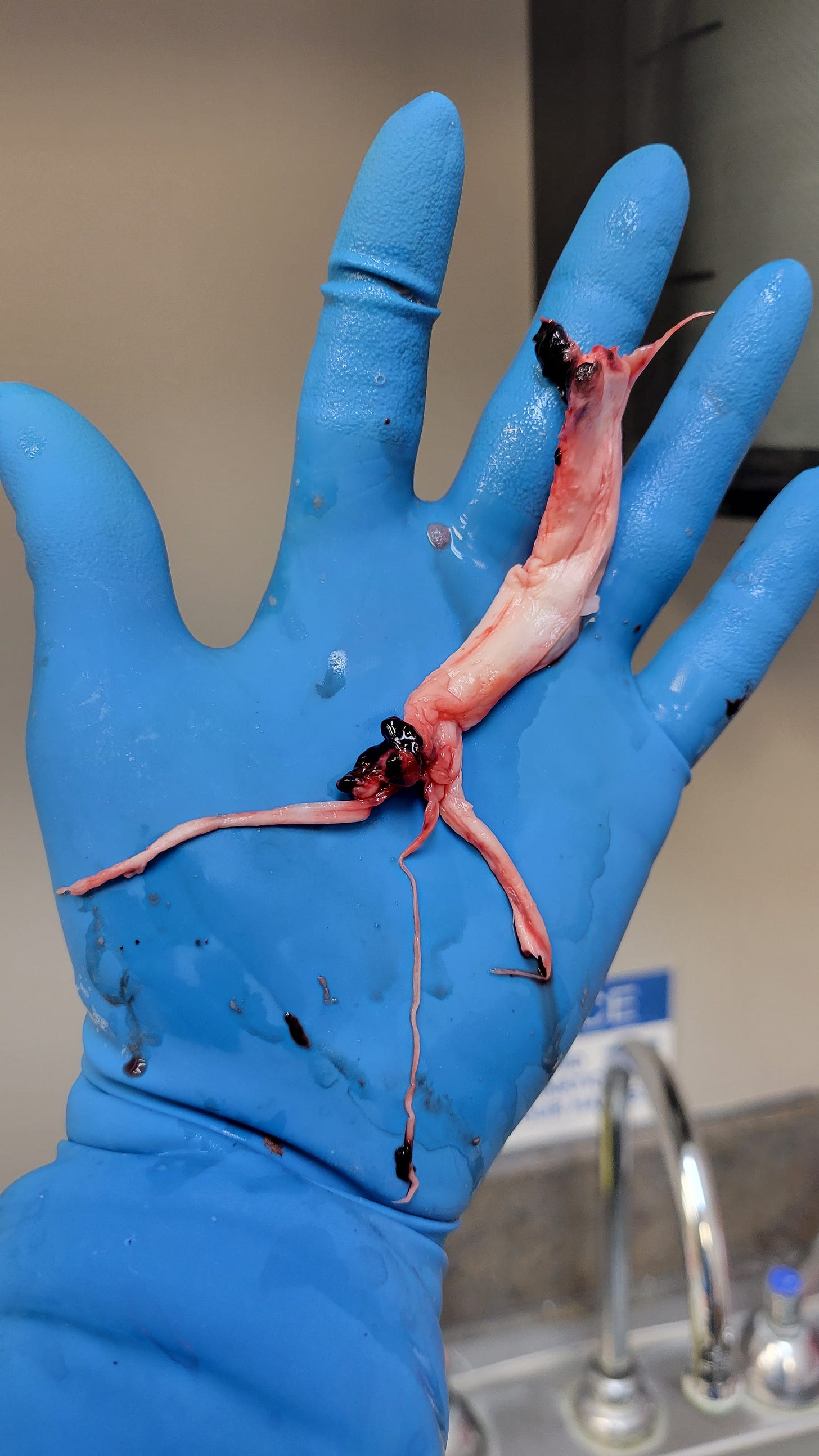


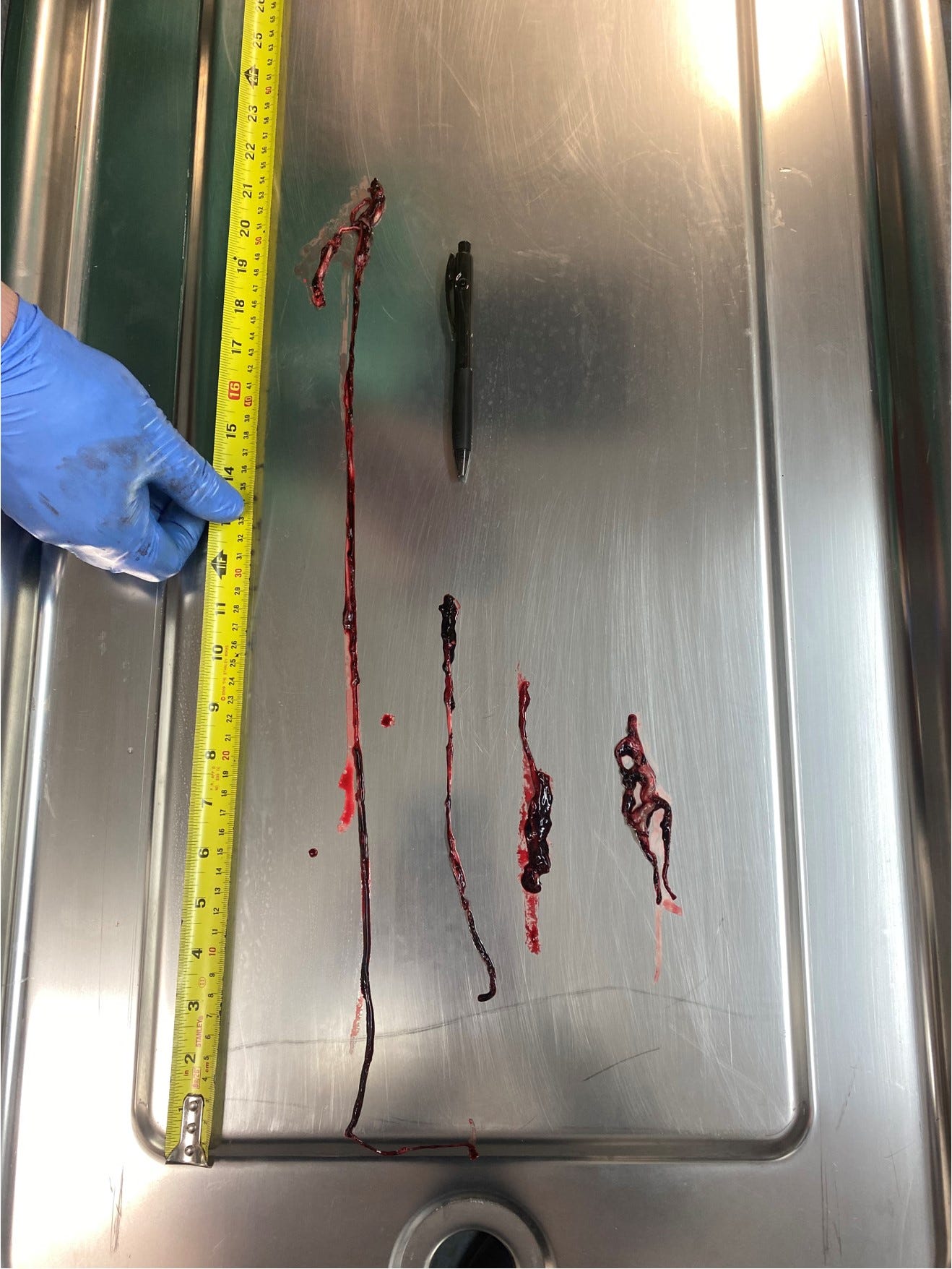
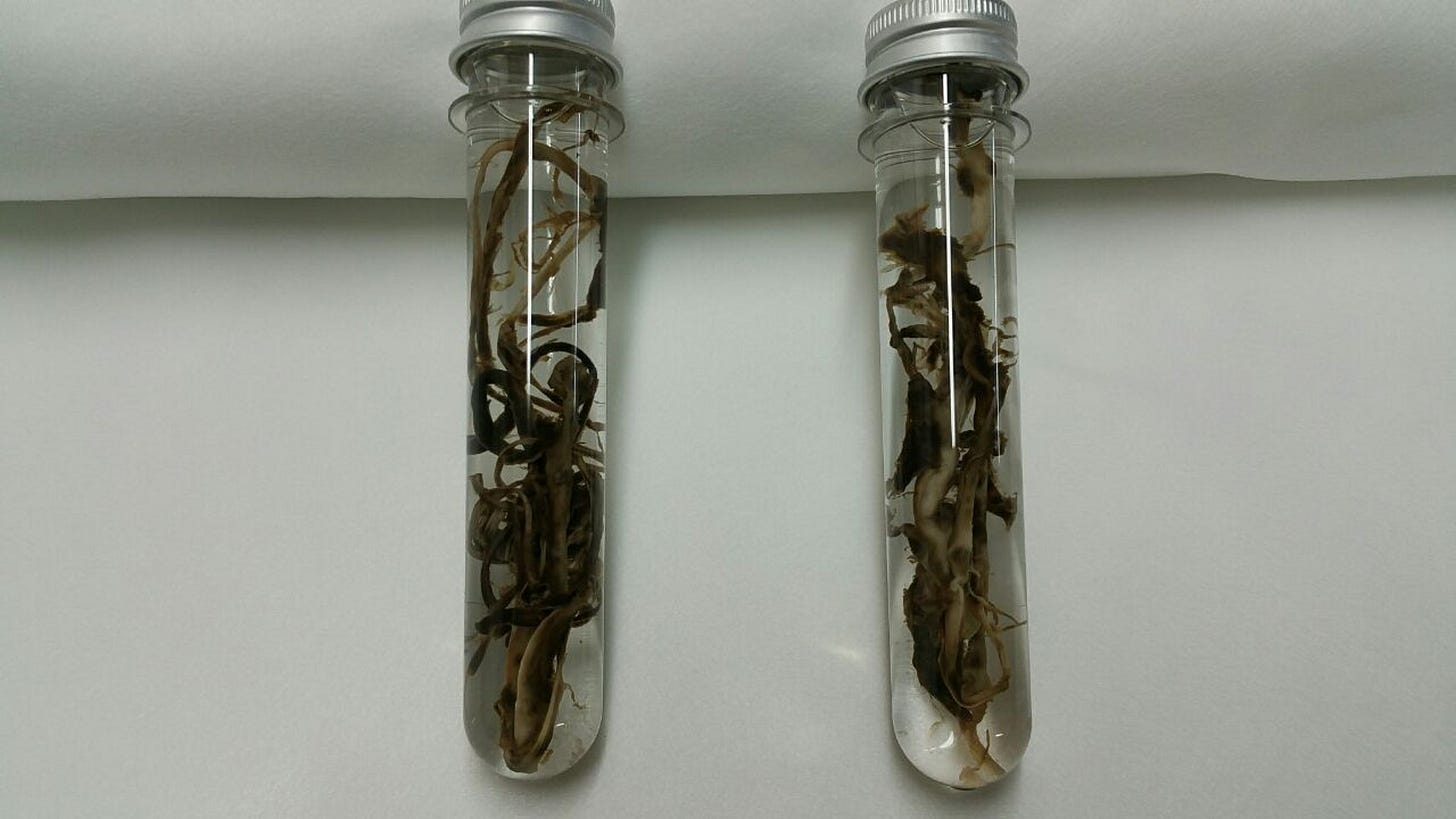
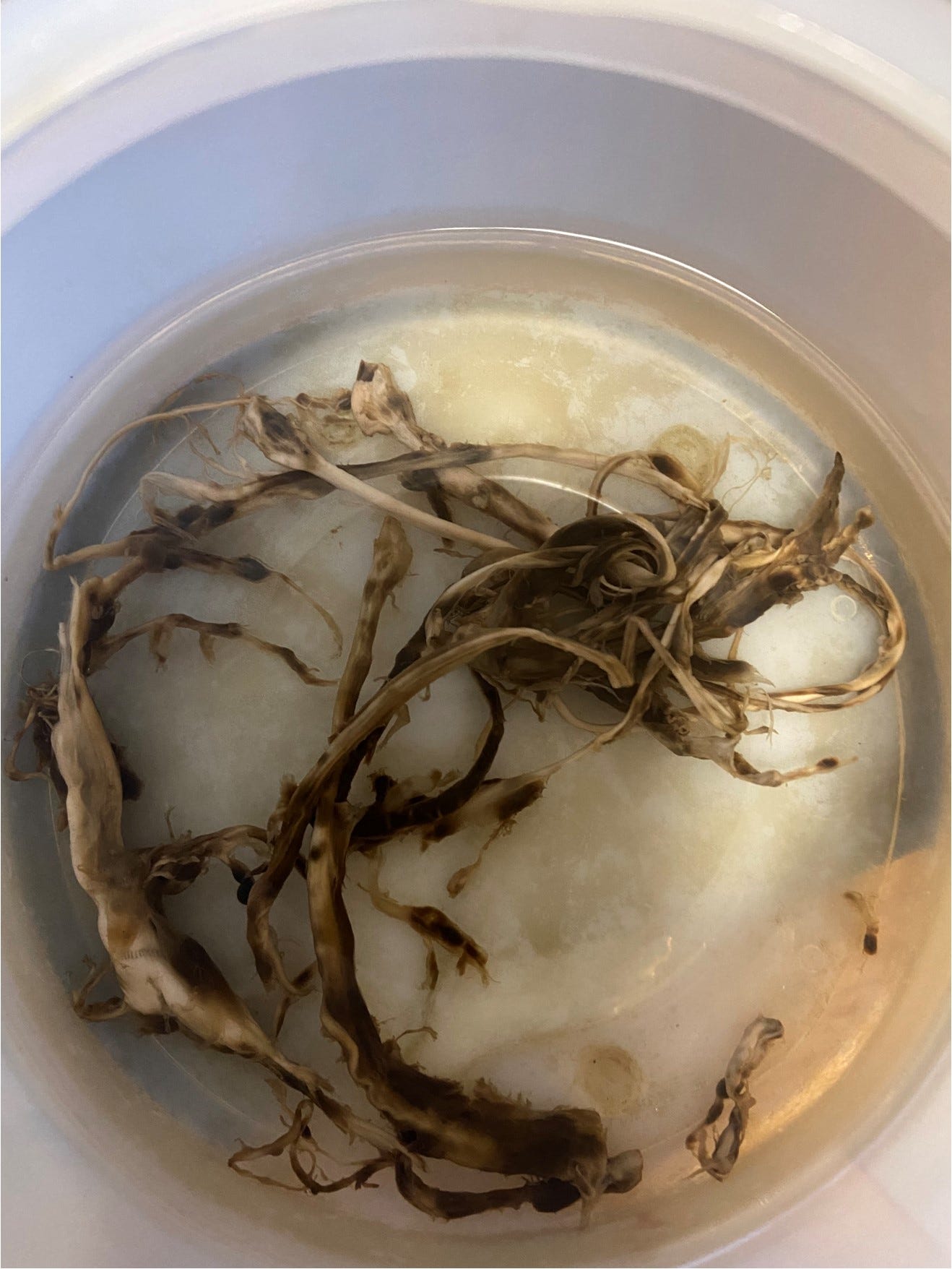


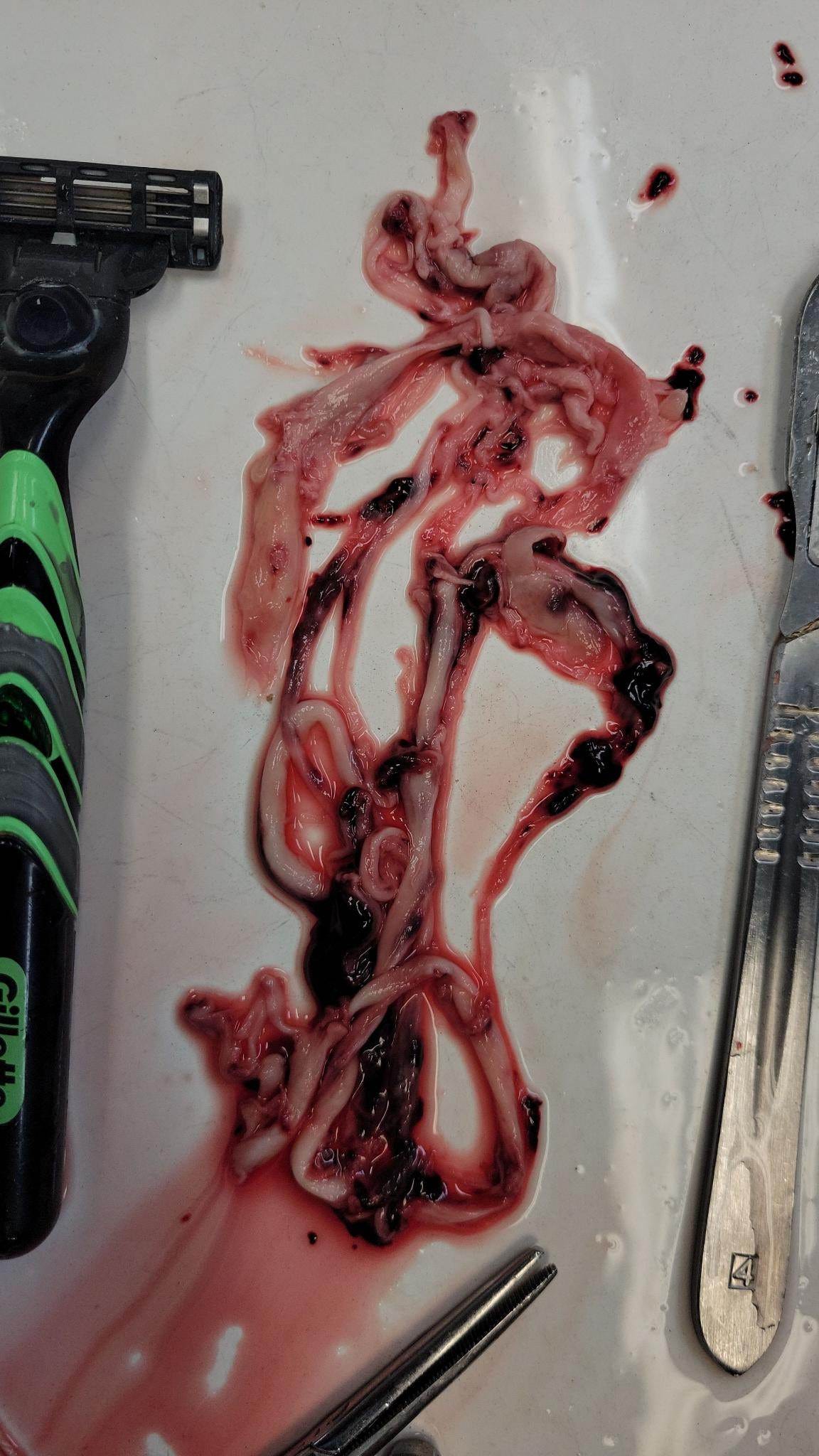
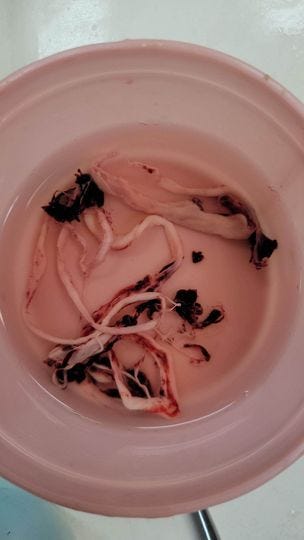
Thank you for this report on ropeworms.
I shall repost.
End the Harmacide scamdemic hacksxxxxine injextions now, immediately, we pray
excellent reporting, though horrifying in what it means. A Midwestern Doctor's substack carries a fairly technical, but very informative article on the white fibrous monstrosities (mistakenly called clots) - https://amidwesterndoctor.substack.com/p/what-is-causing-the-died-suddenly